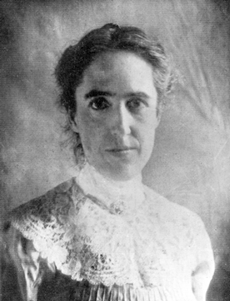There is another condition called diabetes insipidus (a vasopressin deficiency). These patients also urinate excessively, but their urine isn't sweet. Fun fact: in the past, doctors would actually drink a bit of urine to verify diagnosis! So while the word diabetes is used to refer to diabetes mellitus, this can be a bit confusing if you have the other condition.
This Science Byte is focused on diabetes mellitus. I'll bet everyone reading this knows someone who has diabetes - it's fairly common. As you probably know, there are 2 types: type 1 & type 2.
A bit of background first: insulin. Insulin is a hormone that is secreted in response to elevated blood glucose (i.e. after you eat). It works to activate cells to uptake glucose, clearing it from the blood & storing it (or using it - glucose is the cell's main energy source). Diabetes is caused by a disruption of insulin's function (see below for the causes of both types). Diabetics prick their finger to measure their blood glucose - if it's too high or low, they could end up in a coma. Generally though, even with treatment, their glucose levels are higher than normal, eventually contributing to the side effects associated with diabetes (kidney failure, nerve damage, blindness, etc).
Type 1 diabetes: AKA insulin-dependent diabetes, childhood diabetes
People with type 1 diabetes are born with it - they cannot produce insulin (or don't produce nearly enough). This form is less common, comprising about 10% of diabetics in the US. Their immune system actually attacks the cells in the pancreas that secrete insulin (beta cells). The cause of this attack is unknown but thought to be autoimmune-related. So for type-1 diabetics, insulin therapy is necessary & injected daily. This on-going treatment is less than ideal however & cures are in the front line of diabetic research. Until recently, stem cell replacement was thought to be the best way to replace the damaged beta cells (though researchers still haven't found a way to control the insulin secreted by these stem cells). However, Nature Genetics just posted a cutting-edge report by Chutima Talchai, PhD, and Domenico Accili, MD, showing that resident progenitor cells in the gut of mice could be induced to differentiate into insulin-producing glucose-sensitive cells. While much research remains to be conducted to investigate the feasibility of performing these inductions in humans, it certainly provides a fresh new avenue for research.
Type 2 diabetes: AKA insulin-independent diabetes, adult-onset diabetes
Type 2 diabetes typically develops in overweight adults (& with the increasing prevalence of obesity, in teens & children now too). People with type 2 diabetes have normal (or above average) insulin levels in their blood. Instead, they have an insulin insensitivity - the body no long responds to it (or at least not as well as it should). Insulin therapy is therefore ineffective for type 2 diabetes. The causes of type 2 diabetes are not completely understood, but possibly relate to a decrease in the number of insulin-responsive glucose transporters on cells (proteins that take up glucose when stimulated by insulin) due to an excess of glucose (as in diet-induced obesity). Weight loss & exercise are the first line of treatment. Exercise actually increases these glucose transporters in cells. This isn't always enough though & a number of pharmacotherapies are available. All these drugs act to lower blood glucose levels (through different mechanisms I won't get into).
My third cousin was born with type 1 diabetes & my grandpa developed type 2 diabetes. If you've somehow been touched by diabetes, I'd love to hear about it in the comments. Questions (or corrections) are welcome too!
Today's Science Byte is brought to you by Vander, Sherman & Luciano's Human Physiology (p.619) & Science Daily.


 It's like a sine (or cosine) curve, which I'm showing at the left. Imagine one of the lines as the luminosity: it always increases and decreases to the same level of brightness, and each cycle always takes the same amount of time. Somehow (I don't know the exact mechanics) this is used as a ruler to measure distances in the Universe.
It's like a sine (or cosine) curve, which I'm showing at the left. Imagine one of the lines as the luminosity: it always increases and decreases to the same level of brightness, and each cycle always takes the same amount of time. Somehow (I don't know the exact mechanics) this is used as a ruler to measure distances in the Universe..jpg)